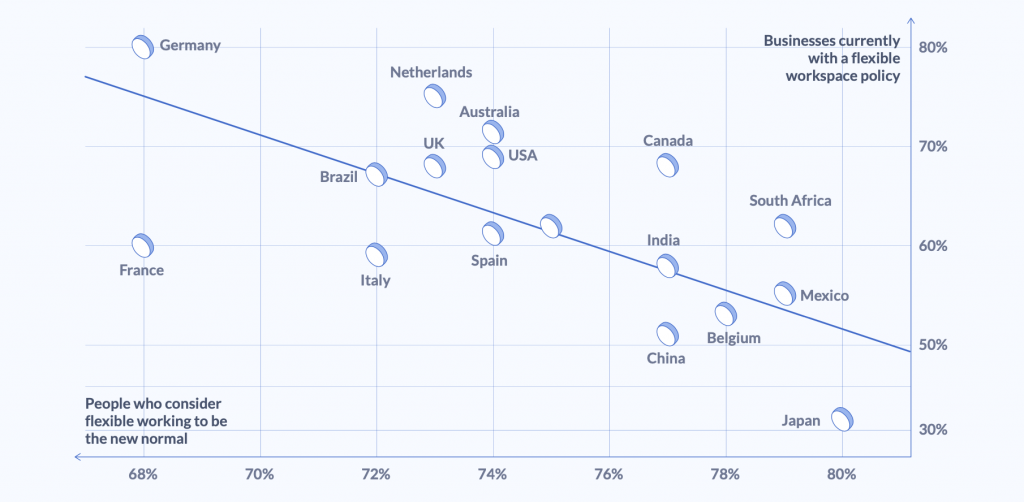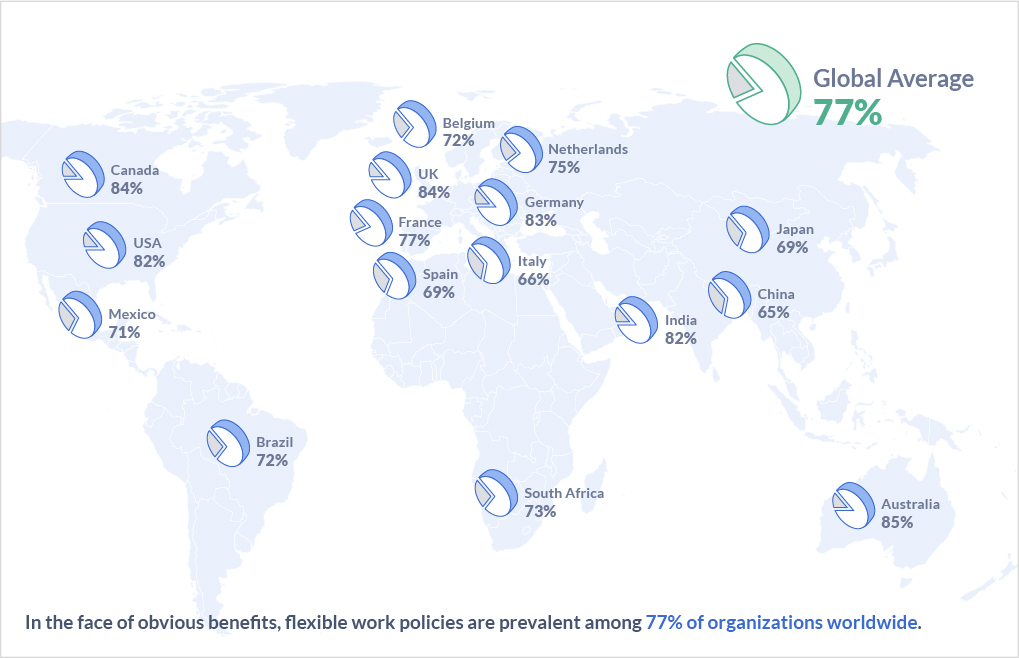In late January, the World Health Organization declared the Coronavirus outbreak an international health emergency, and on March 11, 2020, officially declared the virus as a global pandemic.
The effects of this particular Coronavirus have highlighted the need to protect the health of employees and that of their Companies. As a result, remote work has gone from an already popular work strategy to a necessary one for Companies around the world.
Coronavirus enhanced remote work
The concept of working remotely is not a new trend and has largely become the norm for modern Companies. Allowing employees to do smart-working is mutually beneficial for both employees and Companies, which is precisely why 61% of Companies allow their staff to work this way.
According to the Harvard Business Review, if an organization is ready for remote working-that is, the work is independent enough and the employee knows how to do his or her job well-implementing WFA (working from anywhere) can be beneficial to both the Company and the employee. This trend is growing rapidly, and has already grown by 159% since 2005 – surpassing all other workforce types by a wide margin.

For example, in the United Kingdom and the United States, the prevalence of flexible work policies is in line with employee preferences.
This is no surprise, since managers and executives have experienced that implementing a remote work policy improves productivity in an easily measurable way, estimating that flexible work patterns will save Companies up to $4.5 trillion in the United States alone by 2030.
The most tangible part of productivity is sick days, which traditionally cost Companies significantly when they have to be used, but these are reduced by more than 13% among remote workers.
In addition, it is not surprising that 70 percent of potential hires consider the ability to work agile and remotely a top priority-and that organizations that offer this type of work, will (according to Gartner) have (according to Gartner) a 10% higher Employee Retention in 2020.

A new purpose for remote work
To combat the spread of the Coronavirus, Companies are forcing remote work as a necessity instead of a privilege. Some 60 million people in China were forced to work from home in January as the government tried to contain the infection. More recently, as the virus has spread globally, major tech giants have begun to follow suit. Twitter has asked all its employees around the world to work from home. Amazon, whose headquarters are in Seattle, immediately planned remote access stress tests for all employees.
Even in Italy and the rest of Europe, measures to prevent and combat COVID-19 include working remotely. And while for many Companies it is a matter of extending an already adopted practice to all employees, in other organizations we are witnessing the first real adoption of remote work, without adequate preparation, even in terms of cybersecurity.
More remote workers, more safety deficit
Over the past decade, Companies around the world have increased and expanded remote work opportunities due to the need for an agile workforce that keeps pace with new technologies. However, despite advances in technology and tools that make the workforce increasingly agile, risks are emerging that have more to do with network health than personal health.
Remote work is creating countless security gaps for Companies. While remote workers may be easier targets for hackers, all employees need to be aware that there will be a number of cyber attacks that exploit just human behavior to get into user profiles. One of the easiest sources to attack is Wi-Fi networks.
When allowing employees to work remotely, Companies need to clearly outline employee responsibilities, regarding IT security practices and the importance of data protection. Therefore, to provide a layer of defense against unauthorized network access, Companies must implement specific security policies that include device monitoring, multi-factor authentication and Wi-Fi networks security.
Today, most global organizations still depend on hardware-based VPN technology for secure network access and access to cloud resources across different networks. These site-centric network security measures, developed on hardware that has been relied on for the past 30 years, are no longer adequate to secure access, whether remote or local.
In providing secure network access for remote workers, Companies must create and implement several security strategies to combat attacks on their network and resources. Zero Trust security model applies multiple layers of verification before granting user access to resources.
In addition, by implementing a solution that offers a software-defined perimeter architecture, Companies are facilitated to deploy perimeters globally while maintaining the invisibility and inaccessibility value of the traditional model to “outsiders.”
These measures can be implemented anywhere: on the Internet, in the cloud, in a hosting center, on the private corporate network, or in all of these locations.
Safety, hygiene and health go hand in hand
To prevent the risks associated with working remotely, Companies should be able to work with Software-Defined Perimeter technology and the Zero Trust model to ensure secure access by devices and users from all authorized locations.
They should also look for services that include automatic Wi-Fi security features, ensuring that employee communications are encrypted on all Internet connections.
With the right security tools, Companies can ensure that only authorized connections are established, leaving their cloud environments fully covered from attacks-providing the networks with good health, as well as their users.
Thanks to Perimeter81 for its valuable contribution.
#neverstoplearning #istayathome



